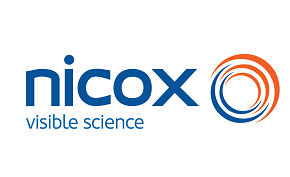Request Demo
Last update 08 May 2025
caspase 3 x caspase 9 x caspase 8
Last update 08 May 2025
Related
1
Drugs associated with caspase 3 x caspase 9 x caspase 8Mechanism caspase 3 inhibitors [+2] |
Active Org.- |
Originator Org. |
Active Indication- |
Inactive Indication |
Drug Highest PhaseDiscontinued |
First Approval Ctry. / Loc.- |
First Approval Date20 Jan 1800 |
2
Clinical Trials associated with caspase 3 x caspase 9 x caspase 8EUCTR2005-003483-31-ES
Eficacia y tolerabilidad preliminar del NCX-1000 oral después de repetidas administraciones a pacientes con hipertensión portal. Estudio a doble ciego con dosis creciente
Start Date17 Nov 2005 |
Sponsor / Collaborator- |
NCT00414869
Preliminary Efficacy And Tolerability Of Oral NCX-1000 After Repeated Administrations In Patients With Portal Hypertension: A Double-Blind Dose Escalating Study
Chronic liver diseases are often characterized by portal hypertension, a major complication involving haemodynamic changes due to increased intrahepatic vascular resistance. It has become well established that nitric oxide (NO) plays a crucial role in the haemodynamic abnormalities that develop in chronic portal hypertension.
NCX-1000 is a NO-releasing derivative of ursodeoxycholic acid that would compensate for the defective liver NO production in cirrhosis.
This study intends to demonstrate the desired therapeutic activity (reduction in portal pressure) in a small number of target patients, to assess the safety and tolerability after repeated oral administrations of NCX-1000, and to get preliminary pharmacokinetic data in this population.
NCX-1000 is a NO-releasing derivative of ursodeoxycholic acid that would compensate for the defective liver NO production in cirrhosis.
This study intends to demonstrate the desired therapeutic activity (reduction in portal pressure) in a small number of target patients, to assess the safety and tolerability after repeated oral administrations of NCX-1000, and to get preliminary pharmacokinetic data in this population.
Start Date01 Nov 2005 |
Sponsor / Collaborator |
100 Clinical Results associated with caspase 3 x caspase 9 x caspase 8
Login to view more data
100 Translational Medicine associated with caspase 3 x caspase 9 x caspase 8
Login to view more data
0 Patents (Medical) associated with caspase 3 x caspase 9 x caspase 8
Login to view more data
2,427
Literatures (Medical) associated with caspase 3 x caspase 9 x caspase 801 Jun 2025·Comparative Biochemistry and Physiology Part B: Biochemistry and Molecular Biology
Purslane leaf powder dietary supplementation rescues cadmium-induced disruption of behavior, antioxidant status, and expression of tight junction genes, in the brain of Nile tilapia (Oreochromis niloticus)
Article
Author: Ibrahim, Rowida E ; Mohamed, Amany Abdel-Rahman ; El-Murr, Abd Elhakeem ; Alhegaili, Alaa S ; Alsubaie, Nawal ; Khamis, Tarek ; Alotaibi, Badriyah S ; Abd-Elhakim, Yasmina M ; Bawahab, Ahmed Abdulwahab ; Metwally, Mohamed M M
01 Apr 2025·Bioorganic Chemistry
Novel inhibitors of oncogenic Wnt/TCF-4/β-catenin signaling pathway: Design, synthesis, molecular docking studies and apoptosis inducing activity of pyrimidothiazino-, dihydropyrimidotriazepino- and 1,3,4-thiadiazolopyrimido-indole hybrids
Article
Author: Mourad, Ahmed A E ; Elmaaty, Ayman Abo ; Al-Karmalawy, Ahmed A ; Khodir, Ahmed E ; Eldehna, Wagdy M ; Hofni, Amal ; Aboubakr, Esam M ; Mourad, Mai A E
01 Apr 2025·Food Science & Nutrition
Effects of Thyme, Cumin, and Sumac Extracts on Apoptosis and Paraptosis in Hepatocellular Carcinoma: Synergistic, Antagonistic, or Additive Properties
Article
Author: Ozturk, Nurefsan Konyaligil ; Ilgun, Selen ; Firat, Yagmur Yasar ; Kara, Ayca ; Cicek, Betul
Analysis
Perform a panoramic analysis of this field.
login
or

AI Agents Built for Biopharma Breakthroughs
Accelerate discovery. Empower decisions. Transform outcomes.
Get started for free today!
Accelerate Strategic R&D decision making with Synapse, PatSnap’s AI-powered Connected Innovation Intelligence Platform Built for Life Sciences Professionals.
Start your data trial now!
Synapse data is also accessible to external entities via APIs or data packages. Empower better decisions with the latest in pharmaceutical intelligence.
Bio
Bio Sequences Search & Analysis
Sign up for free
Chemical
Chemical Structures Search & Analysis
Sign up for free
